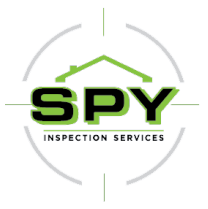Well Inspections
Get Your Private Well Inspected
Most homebuyers would never consider purchasing a home without a thorough inspection of the structure and its operating systems. The same care should be applied to the property’s well system and its drinking water quality. When buying a home with a private well, one of your inspections should include a well system check-up to ensure everything is in good working order. At SPY Inspection Services, we can handle all of your well inspection needs.
How to Prepare for Your Well Inspection
Before the inspection, you should obtain your well's log or record, which contains information on the well's history and the ground surrounding it. Contractors must file well logs with their respective states upon completion of all new wells. However, well owners should also own a copy and keep their own log in case the well needs to be serviced at any time.
We perform well testing for homeowners in Philadelphia, Berks, Bucks, Montgomery, Delaware, Chester, and Lehigh counties.
What to Expect at Your Well Inspection
A SPY field supervisor will provide an inspection of the well's components and reports whether its integral parts are operating satisfactorily. Your assessment also includes the inspector checking the condition of the casing and well cap. An above-ground well cap will be checked for tightness to ensure unwanted invaders or debris can't end up inside and possibly contaminate your well. Some of the most common contamination sources are septic system seepage, road chemicals, and pet waste.
To obtain the basic system condition on the inspection date, the inspector will gather the information while a 30-minute flow test is performed. The final results will be either Satisfactory or Unsatisfactory.
Well Pump Types
- Submersible Pumps – Submersible pumps are centrifugal pumps. The submersible pump has a significant advantage over other centrifugal pumps because all stages of the pump end (wet end), and the motor are joined and submerged in the water. This means there is no need to re-circulate or generate drive water as with jet pumps, so most of its energy goes toward "pushing" the water rather than fighting gravity and atmospheric pressure to draw water. Submersible pumps are recommended for deep wells.
- Jet Pumps – Jet pumps are mounted above ground and lift the water out of the ground through a suction pipe. Prevalent in areas with higher water tables and warmer climates, your pump selection will vary according to water levels.
- Pressure Switch – The pressure switch turns the pump on and off. There should be a 20 psi differential for a typical house well pump. The settings usually are 30-50 or 40-60 psi.
- Drawdown and Recovery Drawdown – This refers to the amount of water that evacuates the tank before the pressure switch will activate the pump. Drawdown is affected by the pump, the tank's size, and the pressure settings that govern your water system. Recovery refers to the time it takes for the tank to recover from switching.
Schedule It All With A Single Call…
Contact SPY Inspection Services today to schedule your Well Inspection. We look forward to exceeding your expectations.
